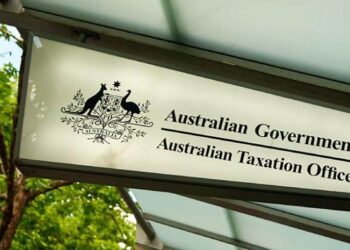In November last year, the Financial Regulator Assessment Authority announced it would be conducting its first review of the effectiveness and capability of ASIC. The focus of its first review of ASIC is on effectiveness and capability in strategic prioritisation, planning and decision‑making, ASIC’s surveillance function, and ASIC’s licensing function.
In a submission to the review, the SMSF Association stated that while it acknowledges the important regulatory role of ASIC in protecting and educating consumers, it has concerns about the potential for “declining engagement between ASIC and professional associations and an emerging culture of reduced consultation and engagement”.
The submission referred to the SMSF fact sheet distributed by ASIC in October 2019 titled SMSFs: Are they for you?
The fact sheet attracted criticism from a number of industry stakeholders following its release, particularly around the annual running costs of $13,900 quoted as average for an SMSF, despite industry estimates of between $1,500 and $5,000.
The fact sheet was intended as consumer education and was a tool in an early intervention project with the ATO. All new SMSFs applying for registration were issued a copy during the project in 2019.
The SMSF association noted in its submission that the publication was released without any prior consultation, engagement, or notice.
“It was particularly disappointing given our long, productive, and consultative relationship with ASIC,” it said in the submission.
“Whilst we support such activities to protect and educate consumers, the gross errors in the factsheet instead indicated a strong bias against the use of SMSFs.”
The submission explained that while the data supporting the fact sheet was obtained from the ATO, due to the nature of the data collected, several key issues arose.
As the data was collected from fields in the SMSF annual return lodged with the ATO, the fields were limited due to the nature and purpose for which it was collected. This meant it may not have been suitable for alternative use, without significant qualification or careful analysis, it noted.
Fund age and life cycle stage were also not considered in the way ASIC presented the data in the fact sheet, it said.
“New fund establishment costs and wind-up costs are known statistical outliers, having disproportionally lower balances and higher costs, skewing the data set,” it explained.
It also noted that the data may not have been granular enough to allow for deeper analysis of the amounts reported.
The submission highlighted that quality and timely data enables regulators to actively monitor, interpret behaviours, identify trends, undertake early intervention activities, plan and develop compliance activities, and measure the outcomes of actions taken.
“It is essential where such a strong reliance is placed on data sources that the suitability, details, timeliness, and limitations are all carefully considered. A readily accessible and cost-effective data source, including that of another regulator does not mean that it is fit for purpose,” it stressed.
“It was therefore disappointing that ASIC sought to utilise ATO data when publishing its SMSF factsheet, without adequate consideration of the suitability of that data. The fact sheet was presented as a source of truth. It however was an example of confirmation bias.”
The data, the submission said, was used and presented in such a way to align with a “desired outcome of directing consumers away from the use of an SMSF, even when professional opinion may have considered that an SMSF was a suitable option for some or many of those consumers”.
The information published by ASIC has had far-reaching implications, the submission stated, that extends beyond ASIC’s consumer and education and protection remit.
The SMSF Association noted that many AFSLs strictly adopted this information and guidance published by ASIC into their policies and procedures information.
“ASIC’s guidance in effect become ‘law.’ In this case, it has made the provision of advice recommending an SMSF for some advisers very challenging,” it stated.
ASIC issued a media release in June 2020 advising that the fact sheet was now outdated and should not be relied on.
“At the end of what was the original, and lengthy two-page media release is a small statement that the factsheet has ‘expired’. A small note stating the same appears on the factsheet. Its expired status lacks the expected prominence given the issues highlighted and should at least be watermarked prominently across the face of each page,” the SMSF Association stated.
The submission also highlighted that the fact sheet clearly remains on the ASIC website and is easily discoverable when conducting a Google search.
“The errors and misrepresentation of facts have never been acknowledged. Despite the very small notes made on the ‘currency’ of the document, it remains readily accessible, is still in active use, and has never been corrected. This is despite the factsheet being inaccurate and not fit for purpose when it was first published,” it stressed.
The SMSF Association stated that consumer education projects of this nature should have a clear framework, be carefully planned and considered and be based on reliable and appropriate data sources.
ASIC should also be aware of the risk of bias and actively seek to identify and minimise the risk of bias throughout the life cycle of a project, it stated.
The association also called on ASIC to engage with professional associations and relevant stakeholders.
“Active engagement and clear lines of communication will assist ASIC in the performance of their role and deliver stronger and sustainable outcomes,” it said.
ASIC should also recognise that fact sheets, info sheets and guidance published by ASIC significantly impact stakeholders and are often adopted as “black-letter law”, it added.
“While this is not ASIC’s intent, greater care, and consideration on how users will interpret and adopt should be considered,” it said.



I nearly forgot about that epic fail from ASIC. 😆
Even ASIC’s “engagement” is not actually engagement at the best of times. They seem to have an attitude that criticism and hampering is their role. They go to such great lengths to criticise publicly anything they don’t fully understand (and matters in financial services they don’t understand are plentiful) and come down hard on those who may just be trying to do the best by their clients. They seem to forget that their role should take into account what clients need and want, and how they want it – they shouldn’t be forcing clients to do things in ways they don’t want, or force them to have to “go it alone” because Advisers aren’t willing to take the risk by helping them due to fear of reprisals by ASIC. A SMSF has a place for large and small investors depending on the costs and what asset/s are to be held in the SMSF and what it’s to be used for. It’s not to say it’s the best or the only option and it’s not for everyone. But I’ve seen some that work well with as little as $200k in them. Others with $1m I’ve seen the client shouldn’t have had in the first place, but ASIC have no issue with those because at least they tick ASIC’s box of minimum appropriate amounts. There’s no one-size-fits-all in financial services, and not everyone is going to fit in with ASIC’s idea of how or what or when they should do X, Y or Z. ASIC should be taking a step back and reassessing themselves, and listening and learning from Accountants, Advisers, Specialists and the public and then restructure themself and their rules. Because the only thing that’s inappropriate in finance these days is ASIC themself.
Unfortunately, Henry, the “one-size-fits-all” approach is always the preferred option for the bureaucrats, because it’s the easiest option for them.
They don’t have to think; they don’t have to come up with targeted measures or nuanced policies. And like all public service bodies, they don’t really care what damage they cause because they know they will never be held accountable for their poor policies, disgraceful bias and general incompetence.